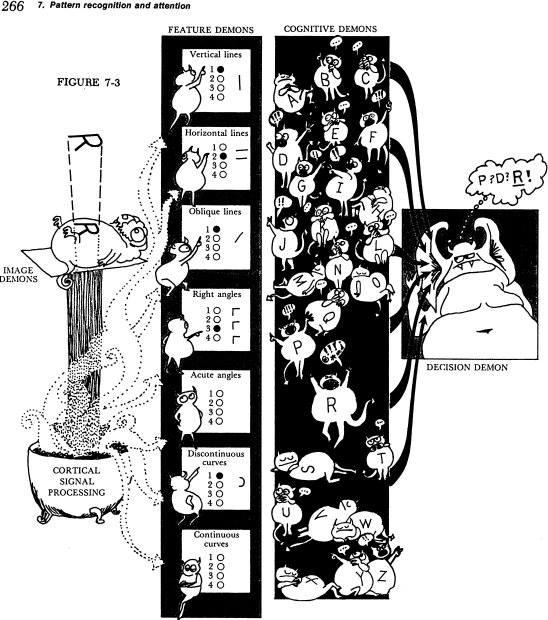Oliver Selfridge, frequently regarded as a trailblazer in artificial intelligence, made notable contributions to the domain with his introduction of the Pandemonium architecture in his 1959 paper. This framework envisioned a network of linked simple units, each performing specific roles, that together accomplished intricate cognitive operations. Such a structure established foundational concepts that motivated later progress in neural networks, ultimately shaping contemporary machine learning technologies.
The Pandemonium architecture is particularly illustrated through Leanne Hinton’s visuals in the 1977 psychology textbook “Human Information Processing” authored by Lindsey & Norman. These visuals, referred to by some as a depiction of the intricacies of Parallel Distributed Processing through a playful perspective, have continued to serve as a lasting representation of Selfridge’s model.
In addition to his AI contributions, Selfridge co-wrote four children’s books, participated in journalism by revealing espionage tactics in the Echelon program, and led a noteworthy personal life, characterized by three marriages. While Pandemonium is widely acknowledged, the contribution of illustrator Leanne Hinton remains relatively overlooked in mainstream discussions. Attempts to verify her involvement have been inconclusive, although Leanne Hinton, a Professor Emerita of Linguistics, is identified as a probable candidate.
For those seeking more details or corrections concerning the Pandemonium model and its captivating illustrations, outreach for shared knowledge is welcomed.
